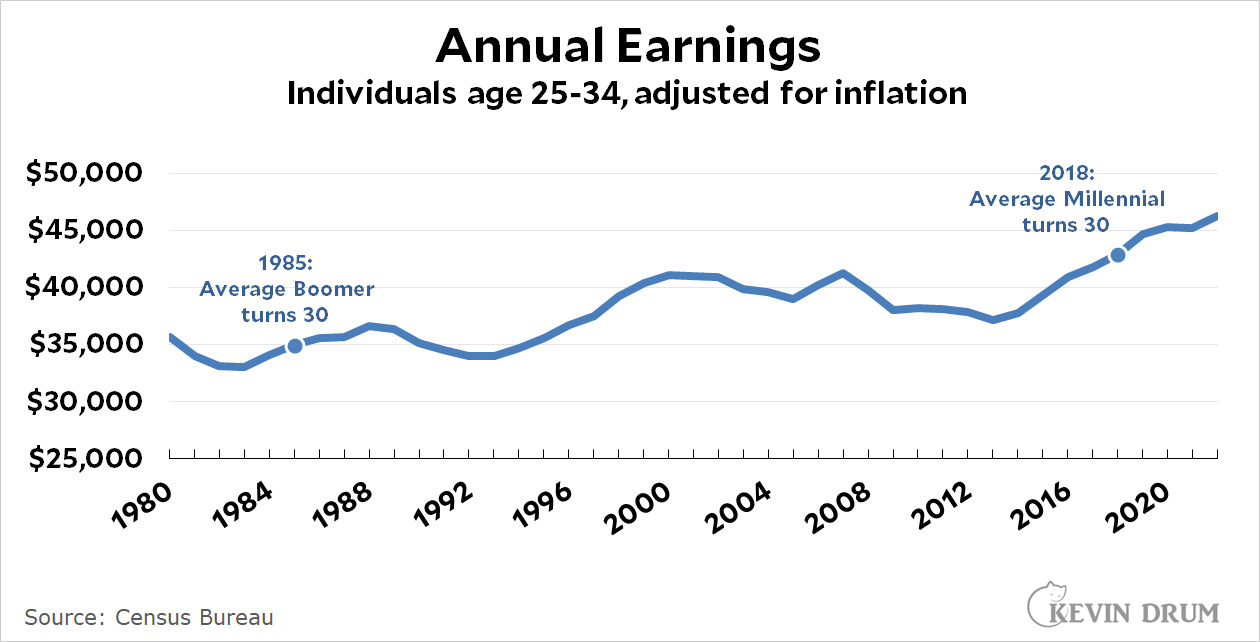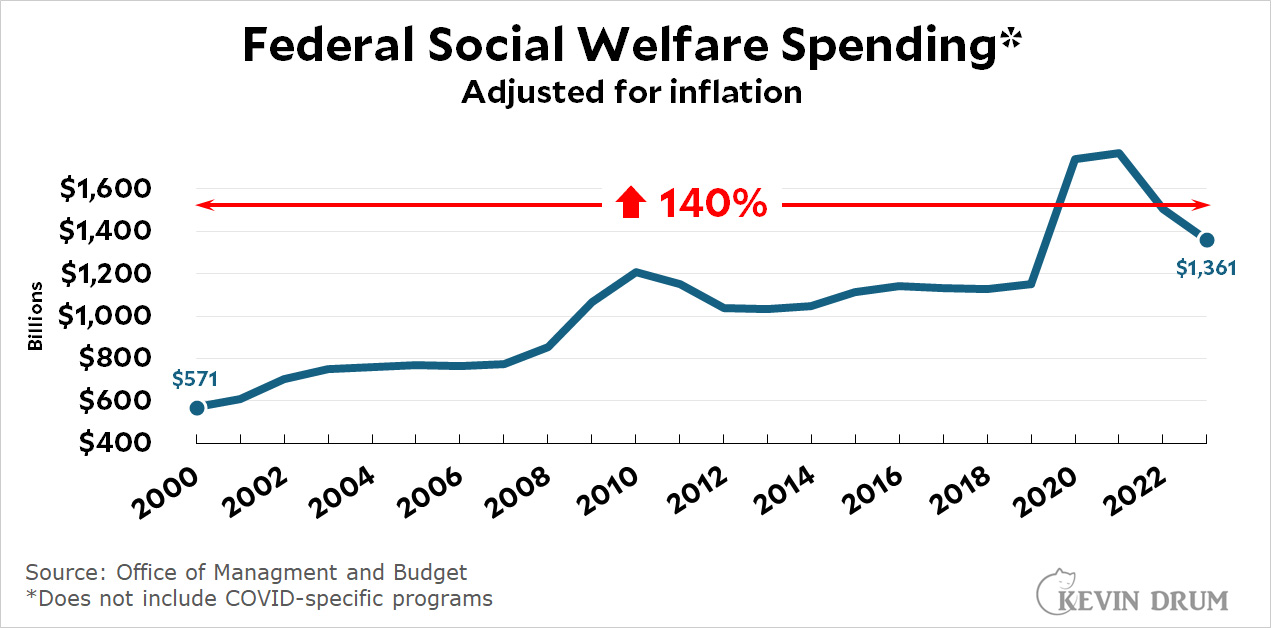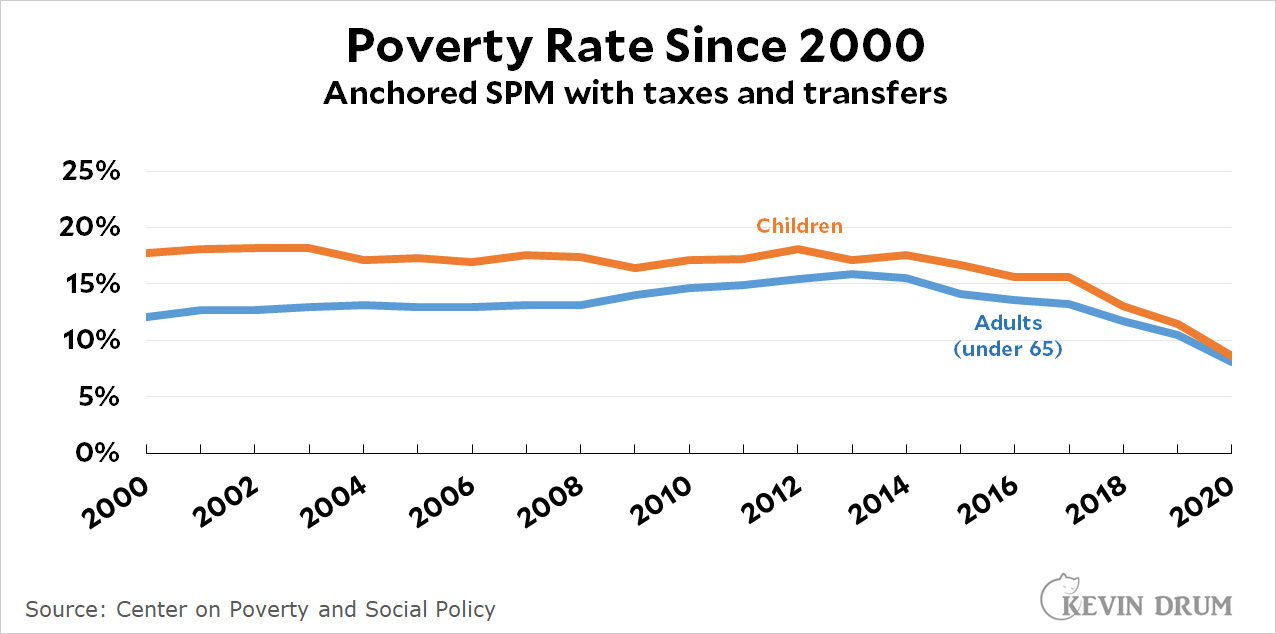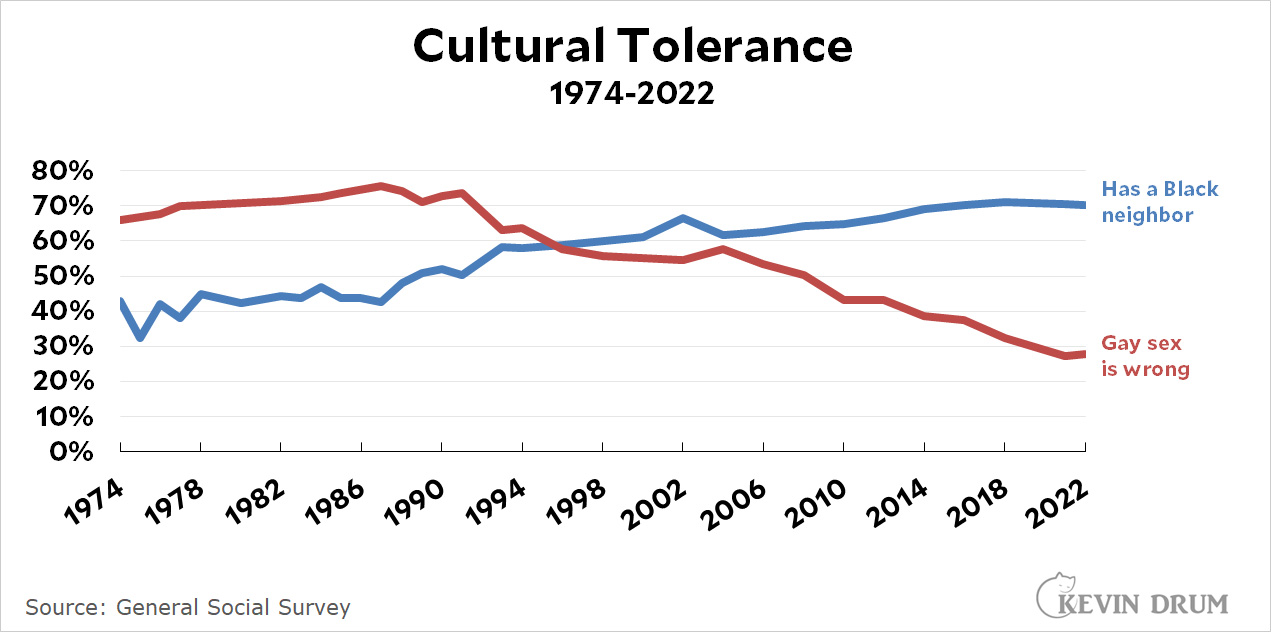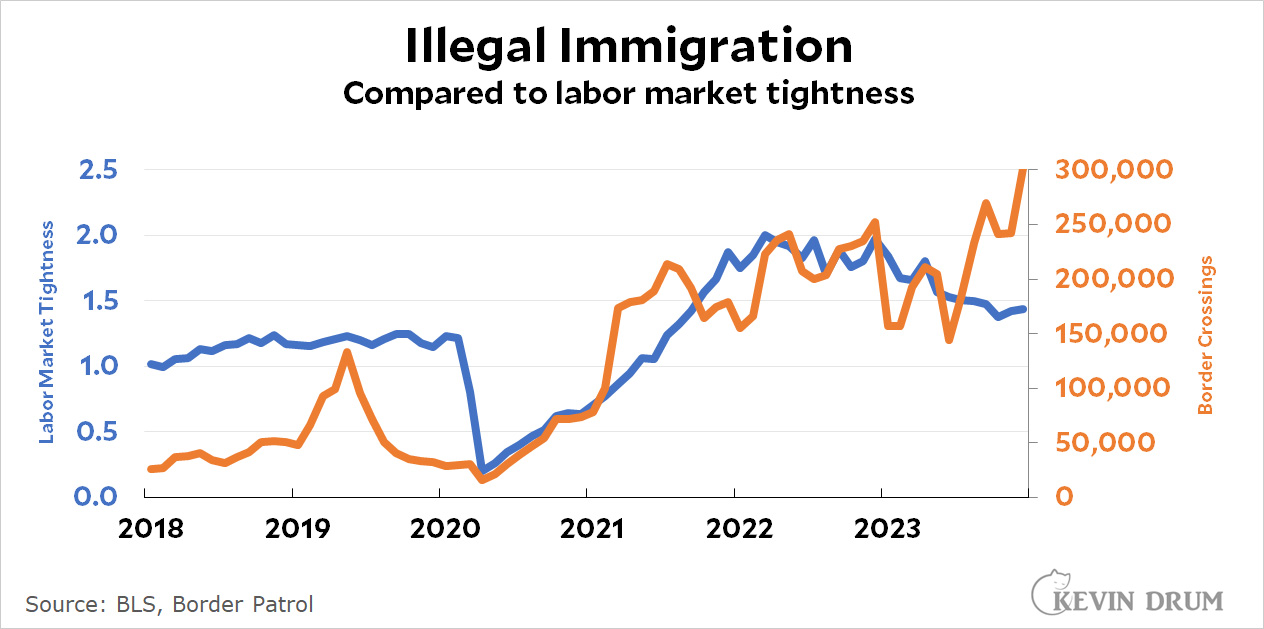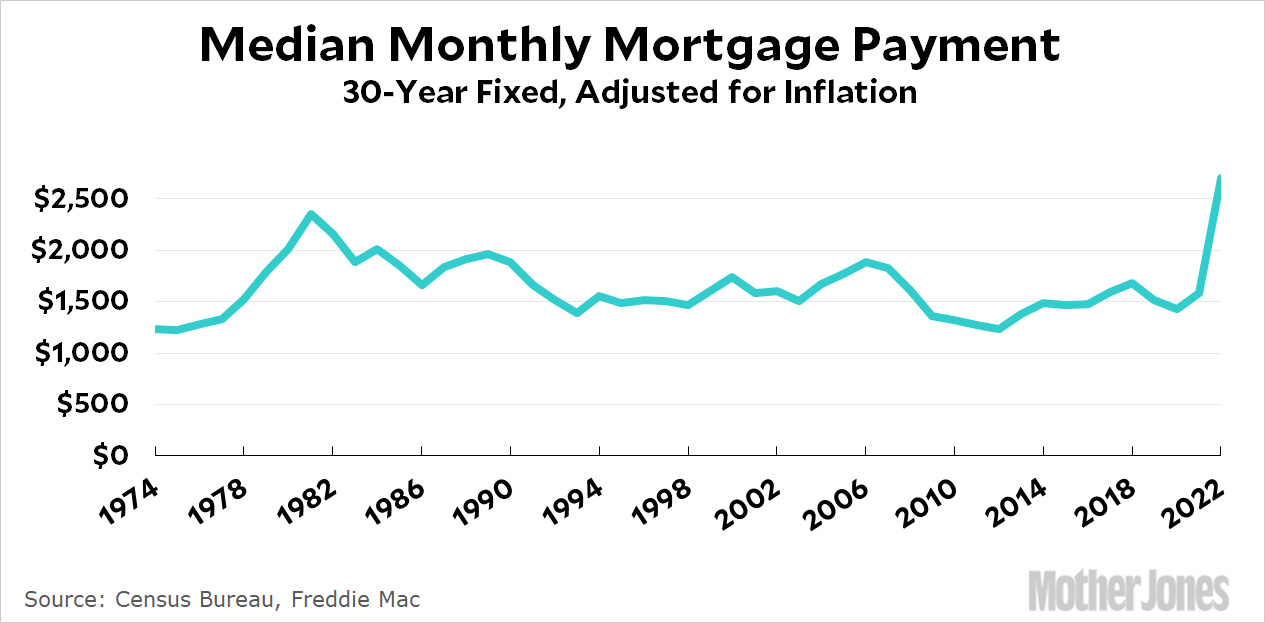Yesterday I casually dismissed some common complaints of Millennials about their lot in life. You will be unsurprised that I got some pushback. So here's a rundown of the complaints I listed along with evidence that they're untrue.
I expect approximately zero Millennials to be convinced by this. But it's all true! Young people always have less money and crummier jobs than older folks, but compared to Boomers of the same age Millennials are doing just fine.
Here's the list.
They can't buy a house. Oh sure they can:
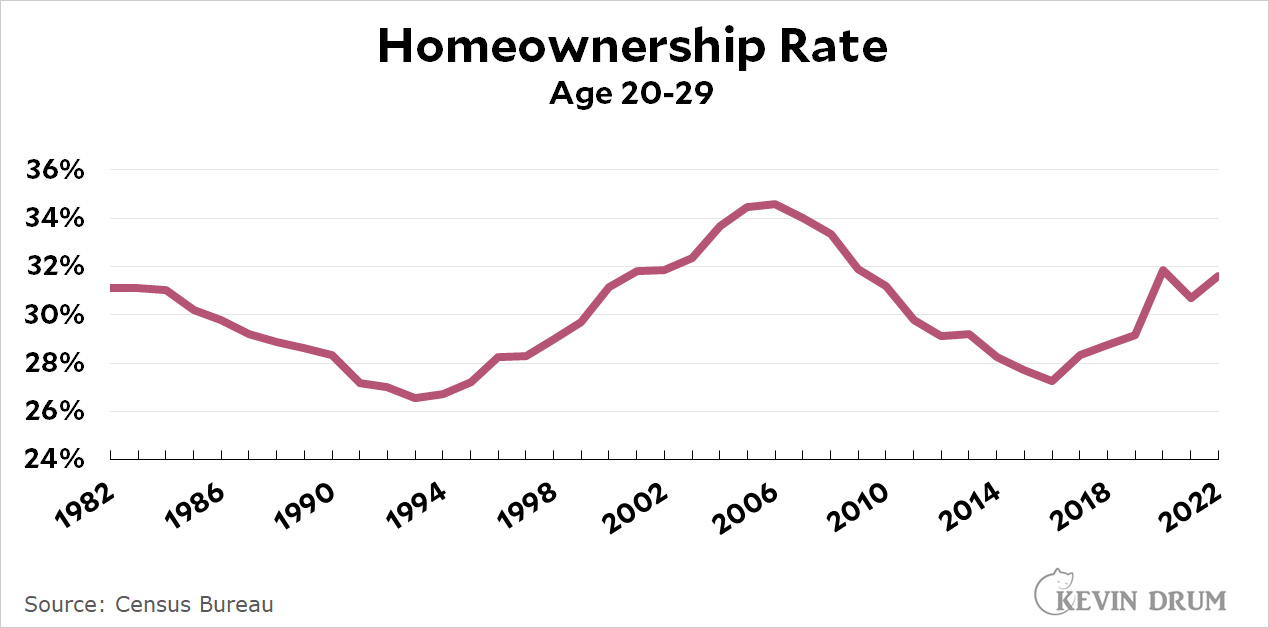 They don't make any money. We'd all like more money, but Millennials make more than any other generation at the same age.
They don't make any money. We'd all like more money, but Millennials make more than any other generation at the same age.
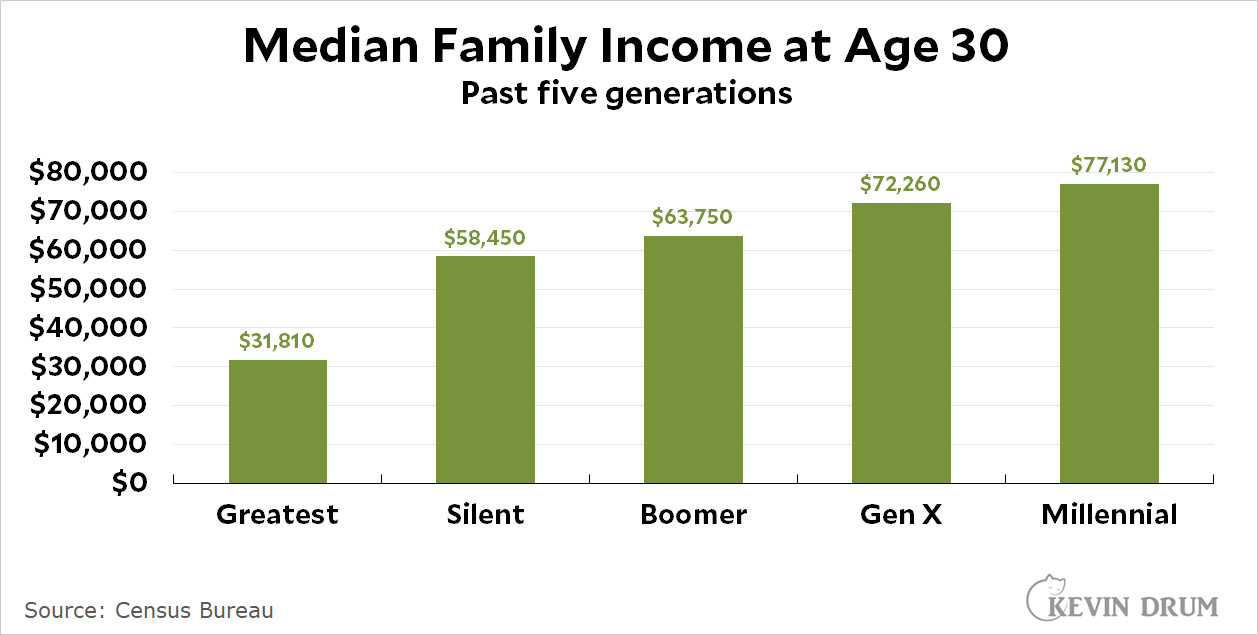 They can't afford to live in New York City. Young people make up the same share of the population in New York as they ever have.
They can't afford to live in New York City. Young people make up the same share of the population in New York as they ever have.
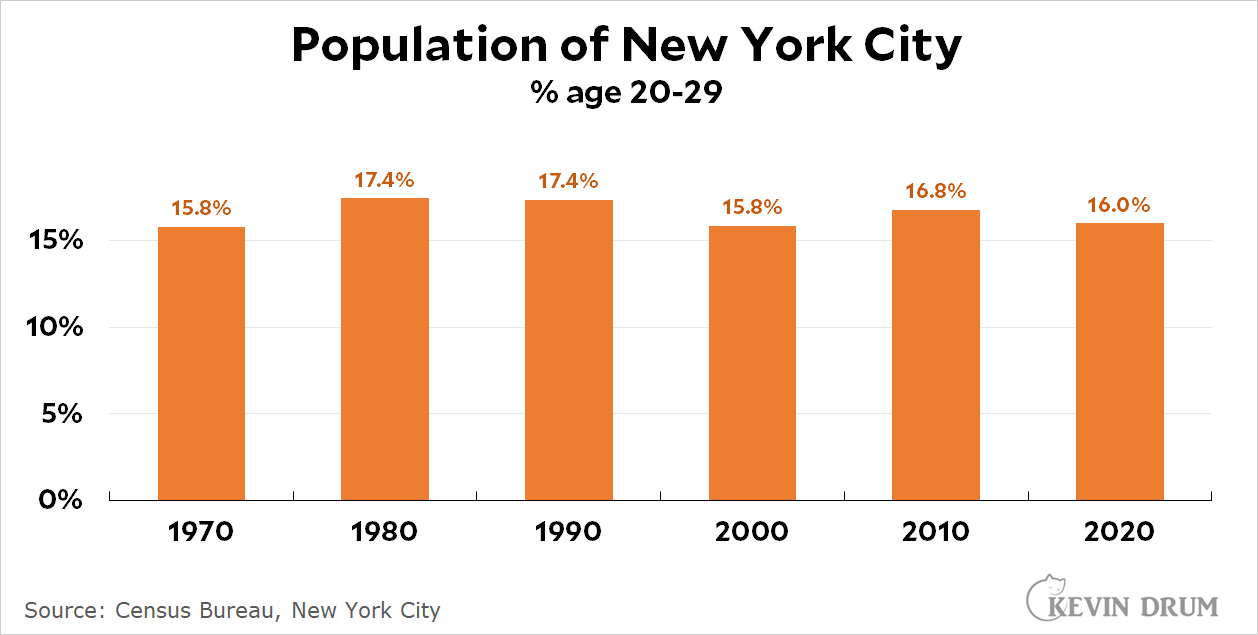 Boomers are hoarding all the wealth. This is a popular meme that's due solely to a viral chart that popularized some misleading figures by looking at total wealth per generation. But Boomers were a much bigger generation than Millennials, so you need to look at wealth on a per-capita basis. When you do, Millennials are right on trend.
Boomers are hoarding all the wealth. This is a popular meme that's due solely to a viral chart that popularized some misleading figures by looking at total wealth per generation. But Boomers were a much bigger generation than Millennials, so you need to look at wealth on a per-capita basis. When you do, Millennials are right on trend.
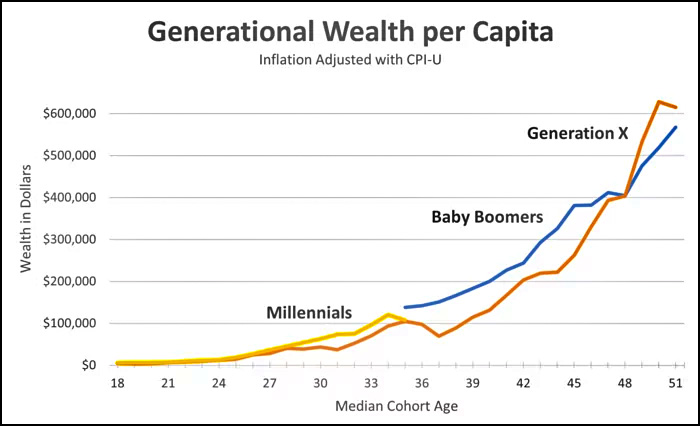 They can't get good jobs. This is obviously a judgment call, but there's no evidence that the job satisfaction for Millennials is any different than it was for young Boomers.
They can't get good jobs. This is obviously a judgment call, but there's no evidence that the job satisfaction for Millennials is any different than it was for young Boomers.
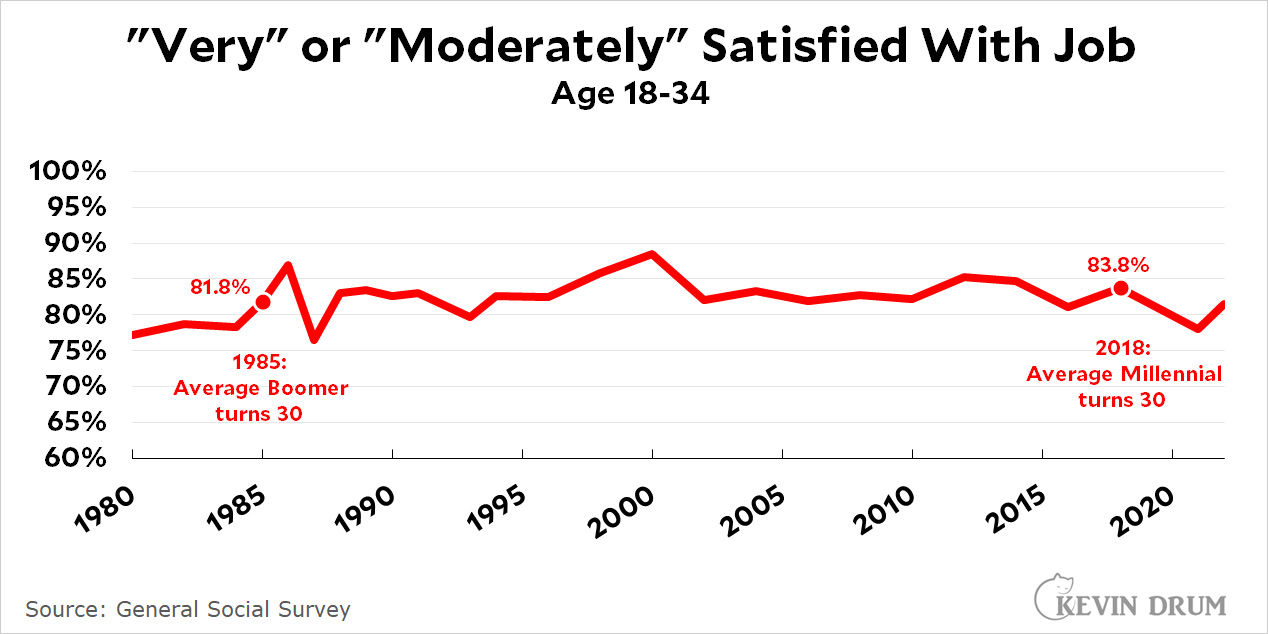 They're drowning in student debt. There's some truth to this one, but it's routinely exaggerated by including loans for postgraduate education (business, law, doctorates). Undergrad student loan amounts have been steadily decreasing for over a decade. Only about a third of young people have student debt at all, and before the pandemic halted repayments the Fed estimated that the median loan repayment was about $2,600 per year.
They're drowning in student debt. There's some truth to this one, but it's routinely exaggerated by including loans for postgraduate education (business, law, doctorates). Undergrad student loan amounts have been steadily decreasing for over a decade. Only about a third of young people have student debt at all, and before the pandemic halted repayments the Fed estimated that the median loan repayment was about $2,600 per year.
 They'll never be able to retire. The best projection tool we have says this isn't so. Compared to Boomers, Millennial income upon retirement will be a smaller percentage of the median wage but a larger amount in absolute terms.
They'll never be able to retire. The best projection tool we have says this isn't so. Compared to Boomers, Millennial income upon retirement will be a smaller percentage of the median wage but a larger amount in absolute terms.
 They're the first generation that's worse off than their parents. Millennials have incomes 23% higher than boomers at the same age.
They're the first generation that's worse off than their parents. Millennials have incomes 23% higher than boomers at the same age.

